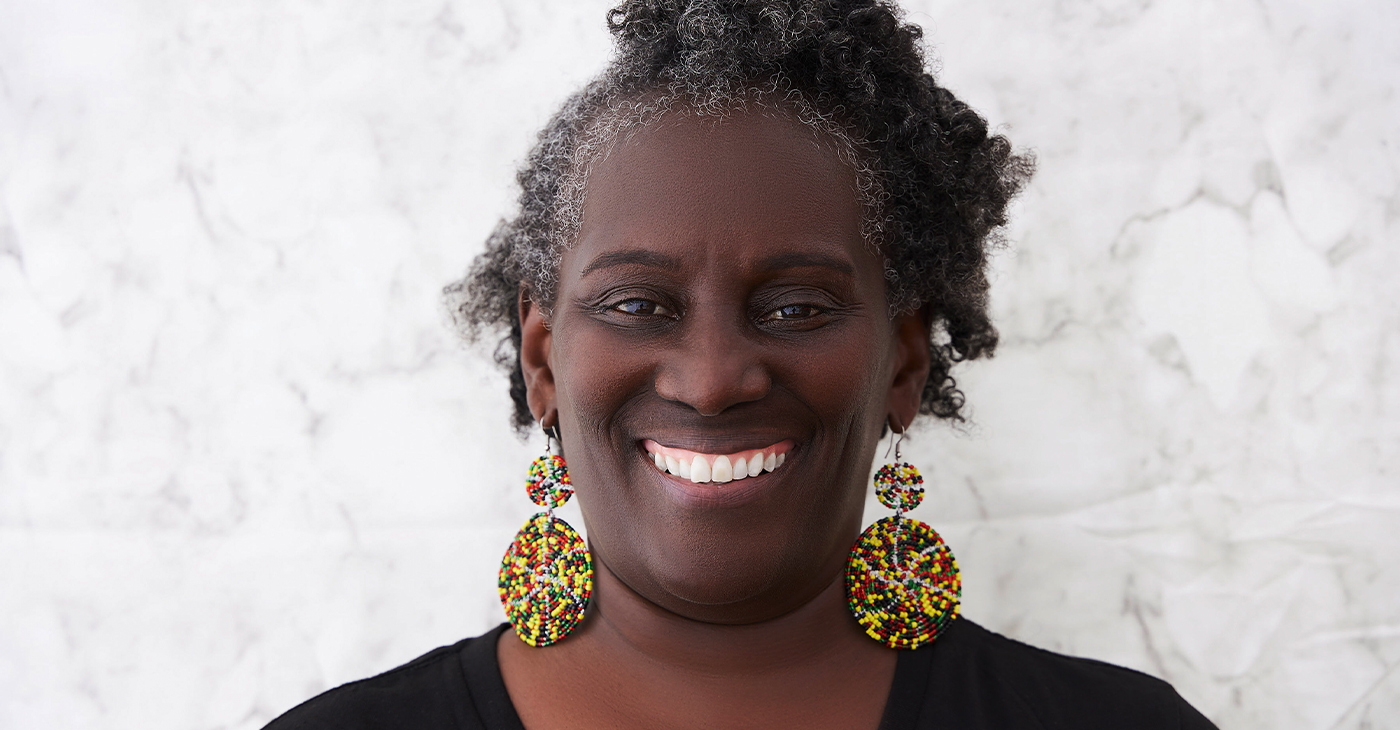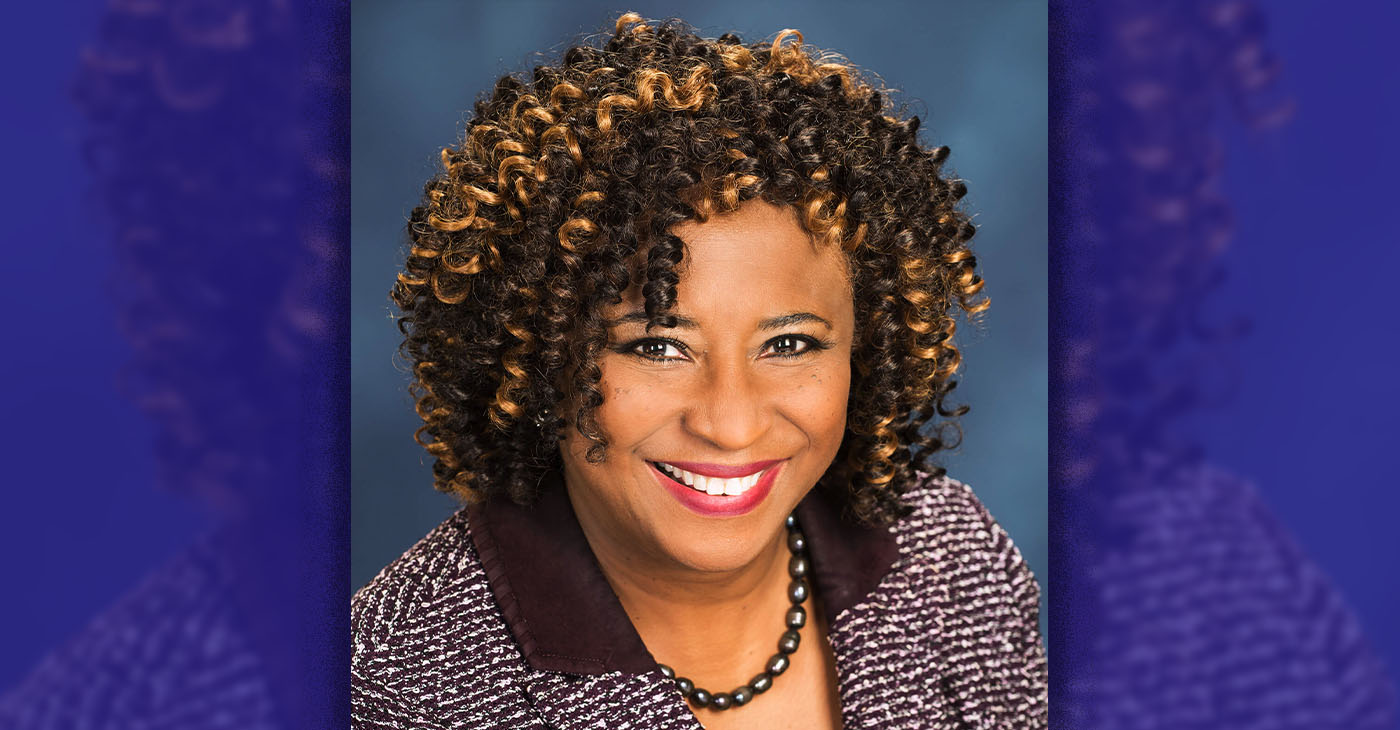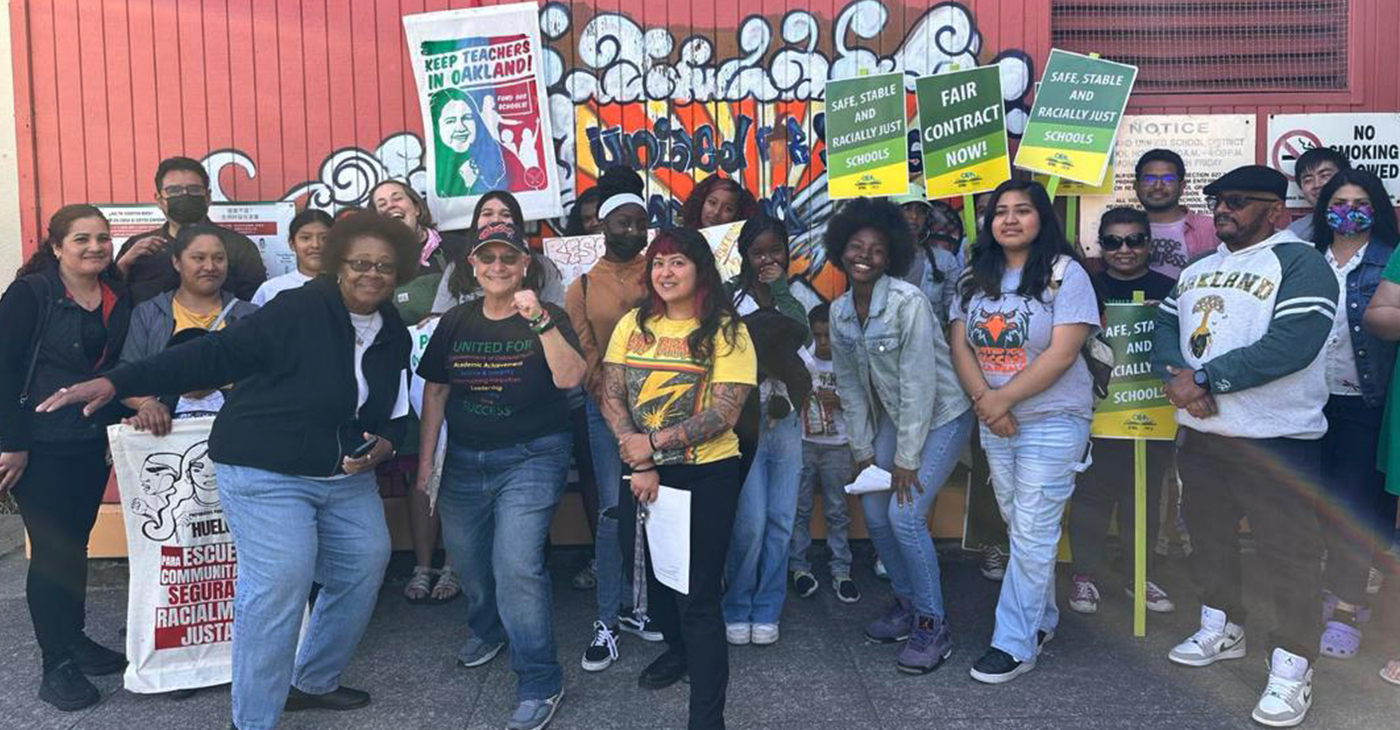Uncategorized
Judge Goodman Denies Prison Release for Richard Johnson
Special to the Post
Richard Johnson, who is currently serving a 25-years-to-life sentence for a third, non-violent felony conviction, is qualified for resentencing and release under the Three Strikes Reform Act of 2012.
The 2012 Act amended the law to impose life sentences only for violent crimes, and to impose lesser punishments for those who have previously been convicted of serious crimes but currently face less serious third felony convictions. This means that those convicted of a third felony, which does not involve violence, will no longer be given life sentences.
Under the 2012 Act, prisoners such as Johnson may petition the court to have their life sentences modified. In ruling upon his petition, the court conducted a “dangerousness hearing” to assess the threat that Johnson might pose if released.
On September 4, Alameda County Judge Larry Goodman denied Johnson’s petition, ruling that resentencing would “pose an unreasonable risk of danger to public safety.” His findings appear to be based entirely on insubstantial evidence and unjustified opinion.
Much of the basis for the denial of Johnson’s petition focused on his criminal history. Johnson has a criminal history and has been in prison for a long time. The facts of this history before his most recent (1997) sentencing are irrelevant when considering the threat that he might pose to society today, if released.
If the California Department of Corrections and Rehabilitation (CDCR) intends to be at all effective in its work, it should be correcting and rehabilitating people who have been convicted of crimes.
Does the Superior Court have such little faith in the ability of the CDCR to perform this intended function that it assumes that a prisoner is as dangerous after 19 years of “correction and rehabilitation” as he was before?
If so, that’s another issue.
Johnson has spent a majority of his lifetime in the prison system and the past 19 years in solitary confinement (SHU), and doesn’t have a single violation on file since 2001 (a harmless mail violation). This means Johnson has spent 13 years acting as a “model prisoner.”
A CDCR success? According to Judge Goodman, Johnson has been in the system so long that he has learned how to manipulate the system. Johnson supposedly knows how to trick the prison guards, the court, and even the court-ordered psychologist.
When Dr. Daisy Switzer conducted a Psychological Risk Assessment, she concluded that Johnson does not pose a threat. Instead of accepting this opinion, Judge Goodman shut it down and even questioned the qualifications of Dr. Switzer, whom he had appointed, seemingly because her findings did not support what he had already concluded.
Other evidence being used against Johnson was his alleged involvement with the Black Guerilla Family (BGF), a political community of black prisoners that has been labeled a “gang.”
The majority of the information regarding the BGF that affected the court’s opinion was presented by a so-called “expert” on black prison gangs, a white police officer who appeared to have never had significant interactions with any so-called “prison gang members.” Even with his interest in framing BGF members in a bad light, this officer was entirely unable to come up with any instances of violence, or even threats of violence, related to the BGF since the 1980s.
Nonetheless, the BGF was considered by the Court to be a “threat to institutional security.” In addition to a lack of evidence in the hearing indicating that the BGF poses a real threat within the prison system, there was no discussion as to how Johnson’s involvement with the BGF would pose a threat outside of the system if he were to be released.
Without this discussion, the use of Johnson’s involvement with the BGF as an indication that he is “dangerous” is not supported by any real evidence and only serves as another example of Judge Goodman’s marked bias.
Goodman goes on to declare that Johnson, who is now in his 60s, has not taken advantage of programming opportunities that would prepare him to be self-sufficient after release. He notes, however, that “the court is aware SHU inmates are not afforded the opportunity for programming as are inmates in the general population,” thus limiting any possibility of Johnson’s involvement in such programming.
Goodman contends that Johnson should have engaged in “self-programming,” though he offers no indication as to what this might be. Goodman cites Johnson’s “lack of marketable skills” as proof that Johnson continues to pose “unreasonable risk of danger to public safety.”
If “marketable skills” are such an important factor in reducing risk, why are SHU inmates not afforded this opportunity?
Furthermore, Johnson is a writer; he writes political essays and poetry and has been offered a job working for Paul Cobb at the Post News Group if and when he is released. Is writing no longer considered a marketable skill, even though it has already secured Johnson a job?
In addition to having a job lined up, Johnson’s sister Yvonne has said that she would invite him to live with her and that payment would not be necessary. Goodman shuts this down as a weak plan, as well.
It is unclear what Goodman would consider to be a valid plan for life after prison, but it is clear that any plan presented by Johnson or his supporters has little to no chance of fitting into that vision.
Goodman’s conclusion is that “there is nothing in Johnson’s court file or prison records, Johnson’s activity while in prison, or in the testimony presented at the ‘dangerousness hearing’ to indicate that Johnson would not return to his life of crime.”
What information could possibly be presented in Johnson’s court file or prison records that would serve as evidence to the contrary? Given that Johnson’s good behavior in SHU these past two decades has elicited no acknowledgement – nor is such acknowledgement common practice at Pelican Bay State Prison – this seems like an absurd assertion.
Further, under the 2012 law the burden is on the District Attorney to prove that Johnson’s release would pose a danger to the community rather than on Johnson to prove that his release would not.
Judge Goodman stated that he does not believe in the Three Strikes Reform Act. Goodman’s resolve to keep Johnson in prison is a blatant disregard for the law and a human rights violation.
Arts and Culture
Rise East Project: Part 3
Between 1990 and 2020, Oakland lost nearly half of its Black population due to economic and social forces. East Oakland, once a middle-class community, is now home to mostly Black families living in poverty.

The Black Cultural Zone’s Pivotal Role in Rebuilding Oakland’s Black Community
By Tanya Dennis
Between 1990 and 2020, Oakland lost nearly half of its Black population due to economic and social forces. East Oakland, once a middle-class community, is now home to mostly Black families living in poverty.
In 2021, 314 Oakland residents died from COVID-19. More than 100 of them, or about 33.8%, were Black, a high rate of death as Blacks constitute only 22.8% of Oakland’s population.
This troubling fact did not go unnoticed by City and County agencies, and the public-at-large, ultimately leading to the development of several community organizations determined to combat what many deemed an existential threat to Oakland’s African American residents.
Eastside Arts Alliance had already proposed that a Black Cultural Zone be established in Deep East Oakland in 2010, but 2020’s COVID-19 pandemic galvanized the community.
Demanding Black legacy preservation, the Black Cultural Zone (BCZ) called for East Oakland to be made an “unapologetically Black” business, commercial, economic development community.
Established initially as a welcoming space for Black art and culture, BCZ emerged into a a community development collective, and acquired the Eastmont police substation in Eastmont Town Center from the City of Oakland in 2020.
Once there, BCZ immediately began combating the COVID-19 pandemic with drive-thru PPE distribution and food giveaways. BCZ’s Akoma Market program allowed businesses to sell their products and wares safely in a COVID-compliant space during the COVID-19 shutdown.
Currently, Akoma Market is operated twice a month at 73rd and Foothill Boulevard and Akoma vendors ‘pop up’ throughout the state at festivals and community-centered events like health fairs.
“Before BCZ existed, East Oakland was a very depressing place to live,” said Ari Curry, BCZ’s chief experience officer and a resident of East Oakland. “There was a sense of hopelessness and not being seen. BCZ allows us to be seen by bringing in the best of our culture and positive change into some of our most depressed areas.”
The culture zone innovates, incubates, informs, and elevates the Black community and centers it in arts and culture, Curry went on.
“With the mission to center ourselves unapologetically in arts, culture, and economics, BCZ allows us to design, resource, and build on collective power within our community for transformation,” Curry concluded.
As a part of Oakland Thrives, another community collective, BCZ began working to secure $100 million to develop a ‘40 by 40’ block area that runs from Seminary Avenue to the Oakland-San Leandro border and from MacArthur Boulevard to the Bay.
The project would come to be known as Rise East.
Carolyn Johnson, CEO of BCZ says, “Our mission is to build a vibrant legacy where we thrive economically, anchored in Black art and commerce. The power to do this is being realized with the Rise East Project.
“With collective power, we are pushing for good health and self-determination, which is true freedom,” Johnson says. “BCZ’s purpose is to innovate, to change something already established; to incubate, optimizing growth and development, and boost businesses’ economic growth with our programs; we inform as we serve as a trusted source of information for resources to help people; and most important, we elevate, promoting and boosting Black folks up higher with the services we deliver with excellence.
“Rise East powers our work in economics, Black health, education, and power building. Rise East is the way to get people to focus on what BCZ has been doing. The funding for the 40 by 40 Rise East project is funding the Black Culture Zone,” Johnson said.
Alameda County
Help Protect D.A. Pamela Price’s Victory
Alameda County District Attorney Pamela Price is asking supporters of the justice reform agenda that led her to victory last November to come to a Town Hall on public safety at Montclair Presbyterian Church on July 27.

By Post Staff
Alameda County District Attorney Pamela Price is asking supporters of the justice reform agenda that led her to victory last November to come to a Town Hall on public safety at Montclair Presbyterian Church on July 27.
Price is facing a possible recall election just six months into her term by civic and business interests, some of whom will be at the in-person meeting from 6:00-9:00 p.m. at 5701 Thornhill Dr. in Oakland.
“We know that opponents of criminal justice reform plan to attend this meeting and use it as a forum against the policies that Alameda County voters mandated DA Price to deliver. We cannot let them succeed,” her campaign team’s email appeal said.
“That’s why I’m asking you to join us at the town hall,” the email continued. “We need to show up in force and make sure that our voices are heard.”
Price’s campaign is also seeking donations to fight the effort to have her recalled.
Her history-making election as the first African American woman to hold the office had been a surprise to insiders who had expected that Terry Wiley, who served as assistant district attorney under outgoing D.A. Nancy O’Malley, would win.
Price campaigned as a progressive, making it clear to voters that she wanted to curb both pretrial detention and life-without-parole sentences among other things. She won, taking 53% of the vote.
Almost immediately, Price was challenged by some media outlets as well as business and civic groups who alleged, as she began to fulfill those campaign promises, that she was soft on crime.
On July 11, the recall committee called Save Alameda for Everyone (S.A.F.E.) filed paperwork with the county elections office to begin raising money for the next step toward Price’s ouster: gathering signatures of at least 10% of the electorate.
S.A.F.E. has its work cut out for them, but Price needs to be prepared to fight them to keep her office.
In a separate sponsored letter to voters, Price supporters wrote:
“We know that you supported DA Price because you believe in her vision for a more just and equitable Alameda County. We hope you share our belief that our criminal justice system has to be fair to everyone, regardless of their race, gender, ethnicity, religion, or socioeconomic status.
“The Republican-endorsed effort is a blatant attempt to overturn the will of the voters and a waste of time and money. It is an attempt to silence the voices of those who want real justice. We cannot let these election deniers succeed.
“Will you make a donation today to help us protect the win?
“Please watch this video and share it with your friends and family. We need to stand up to the sore losers and protect the win. Together, we can continue to make Alameda County a more just, safe and equitable place for everyone.”
For more information, go to the website: pamelaprice4da.com
or send an e-mail to info@pamelaprice4da.com
Bay Area
Oakland Teachers Walk Out
After negotiating late into the night and months of fruitless bargaining with the Oakland Unified School District, Oakland teachers went out on strike Thursday morning. “Our (50-member) bargaining team has been working for seven months working, making meaningful proposals that will strengthen our schools for our students,” said Oakland Education Association (OEA) Interim President Ismael “Ish” Armendariz, speaking at press conference Monday afternoon.

OEA calls unfair labor practices strike after 7 months of negotiations.
By Ken Epstein
After negotiating late into the night and months of fruitless bargaining with the Oakland Unified School District, Oakland teachers went out on strike Thursday morning.
“Our (50-member) bargaining team has been working for seven months working, making meaningful proposals that will strengthen our schools for our students,” said Oakland Education Association (OEA) Interim President Ismael “Ish” Armendariz, speaking at press conference Monday afternoon.
“OUSD has repeatedly canceled bargaining sessions, has failed to offer meaningful proposals or counterproposals at a majority of the bargaining sessions and has repeatedly failed to discuss certain items,” Armendariz said.
“The days (of bargaining) have been long, and after hours of waiting, the superintendent finally showed up on Sunday night at 11:00 p.m.to meet with our team (for the first time),” he said. “(But) the district continues to come to the table unprepared, and this is unacceptable.”
“This is illegal, and OEA has filed an Unfair Labor Practice charge with the state Public Employment Relations Board (PERB). Under California law, OEA has a right to strike over unfair labor practices,” he said.
OEA represents 3,000 teachers, counselors, psychologists, speech pathologists, early childhood educators, nurses, adult education instructors and substitute teachers, serving 35,000 Oakland public school students. Other labor groups representing school employees include SEIU 1021 and construction unions.
In a press statement released on Tuesday, OUSD said it has been trying to avert a strike.
“The district will remain ready to meet with the teachers’ union at any time and looks forward to continuing our efforts to reach an agreement with OEA … We will continue to do everything possible to avoid a work stoppage.”
“Our children’s education does not need to be interrupted by negotiations with our union, especially given the major offer the District made on Monday,” other district press statements said. “We are committed to continuing to work with our labor leaders to discuss their salaries and support services for our students without the need for a strike.”
OUSD’s latest salary proposal, released this week, includes a 10% raise retroactive to Nov. 1, 2022, and a $5,000, one-time payment to all members.
OEA’s recent salary proposal asked for a 10% retroactive raise to all members, a one-time $10,000 payment to members who return for the 2023-2024 school year, and increases from $7,500 to $10,000 to salaries, based on years of experience.
In addition to pay demands, OEA is making “common good” proposals that serve families and the community, including protecting and enhancing special education programs, putting the brakes on closing schools in flatland neighborhoods, shared school leadership, safety, and support for students.
-

 Activism4 weeks ago
Activism4 weeks agoOakland Post: Week of March 27 – April 2, 2024
-

 #NNPA BlackPress4 weeks ago
#NNPA BlackPress4 weeks agoCOMMENTARY: D.C. Crime Bill Fails to Address Root Causes of Violence and Incarceration
-

 #NNPA BlackPress4 weeks ago
#NNPA BlackPress4 weeks agoFrom Raids to Revelations: The Dark Turn in Sean ‘Diddy’ Combs’ Saga
-

 #NNPA BlackPress4 weeks ago
#NNPA BlackPress4 weeks agoCOMMENTARY: Lady Day and The Lights!
-

 #NNPA BlackPress4 weeks ago
#NNPA BlackPress4 weeks agoMayor, City Council President React to May 31 Closing of Birmingham-Southern College
-

 #NNPA BlackPress4 weeks ago
#NNPA BlackPress4 weeks agoBaltimore Key Bridge Catastrophe: A City’s Heartbreak and a Nation’s Alarm
-

 #NNPA BlackPress4 weeks ago
#NNPA BlackPress4 weeks agoBaltimore’s Key Bridge Struck by Ship, Collapses into Water
-

 #NNPA BlackPress4 weeks ago
#NNPA BlackPress4 weeks agoBeloved Actor and Activist Louis Cameron Gossett Jr. Dies at 87


















































